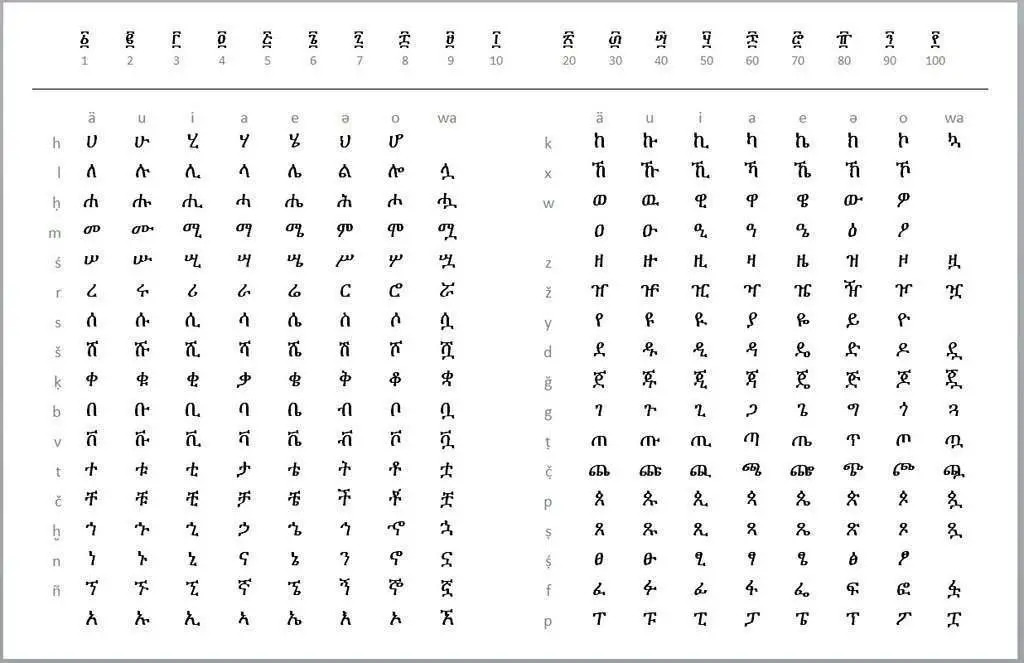28 Days of Excellence
28 DOBE- Day 23: African Scripts

Unique Script. We’ve all heard of different writing types–Greek, Arabic, Germanic. But have you heard of these?
Ethiopic is an African Writing System designed as a meaningful and graphic representation of knowledge. It is a component of the African Knowledge Systems and one of the signal contributions made by Africans to the world history and cultures. It is created to holistically symbolize and locate the cultural and historical parameters of the Ethiopian people. The System, in its classic state, has a total of 182 syllographs, which are arranged in seven columns, each column containing 26 syllographs. Ethiopic is a knowledge system because it is brilliantly organized to represent philosophical features, such as ideography, mnumonics, syllography, astronomy, and grammatology
We are very familiar with the African Egyptian hieroglyphic script and the African Ethiopian Geez script, which date as old as 3000 BC and 500 BC years respectively.
However forgotten by no coincidence are many other ancient African scripts that are unique and expressive in their own ways. Scripts created and used for hundreds of years from Sudan to Nigeria. It appears that one of the main reasons why these great African script were lost in the sands of Historical time, is the direct mechanism of the colonial operation.
RELATED: 28 DOBE- Day 21: The Originators, The Sam People
By the third century BC a new indigenous alphabet, the Meroitic, consisting of twenty-three letters, replaced Egyptian script. The Meroitic script is an alphabetic script originally derived from Egyptian hieroglyphs, used to write the Meroitic language of the Kingdom of Meroë/Kush. It was developed sometime during the Napatan Period (about 700 – 300 BC), and first appears in the 2nd century BC. For a time, it was also possibly used to write the Nubian language of the successor Nubian kingdoms. The Meroitic script is very similar to the Egyptian Writing System. It was used by the Meroe people, a civilization of the Sudan. The system is written from right to left, unlike the Egyptian system which can be written right to left, left to right, and vertically. [5]
 Had Hanibal visited Liberia in 500 B.C., particularly Kpowin(Tradetown) and Bassa Cove, he would have witnessed the Bassa script in use. The script is called Vah by the Bassas, which is translated to the phrase: To throw sign. Not to be confused with the Vai ethnic group, who also have their own written script as mentioned above. Vah was initially the throwing of sign or signals utilizing the natural environment. Teeth marks would be left on leaves and placed in a discrete location for the intended reader. Messages where also carved in the barks of trees. Eventually this evolved into a complex written language. During the era of the Trans-Atlantic slave trade, many Bassas avoided slave traders by utilizing Vah(Bassa Script). During the colonial, and on through to the neo-colonial period in Africa, a decline in the usage of Vah script caused by external cultural forces, almost brought this written portion of the Bassa language to extinction.
Had Hanibal visited Liberia in 500 B.C., particularly Kpowin(Tradetown) and Bassa Cove, he would have witnessed the Bassa script in use. The script is called Vah by the Bassas, which is translated to the phrase: To throw sign. Not to be confused with the Vai ethnic group, who also have their own written script as mentioned above. Vah was initially the throwing of sign or signals utilizing the natural environment. Teeth marks would be left on leaves and placed in a discrete location for the intended reader. Messages where also carved in the barks of trees. Eventually this evolved into a complex written language. During the era of the Trans-Atlantic slave trade, many Bassas avoided slave traders by utilizing Vah(Bassa Script). During the colonial, and on through to the neo-colonial period in Africa, a decline in the usage of Vah script caused by external cultural forces, almost brought this written portion of the Bassa language to extinction.
The Nigerian Nsibidi is an indigenous adaptable and fluid writing system of two dimensional signs, three dimensional forms of pictographs and ideographs and pantomimed gestures. It originated as an esoteric form of knowledge understood by a select group of people mostly members of a secret society in Southeastern Nigeria which some sources link to the Ejagham and later spread to Efik, Igbo, Ibibio, Efut, Annang and Banyang speaking areas.
Some of the signs of the Nsibidi spread to the Caribbean and Brazil during the slave trade. Today’s example of black excellence, presented by African scripts!








